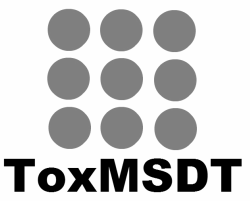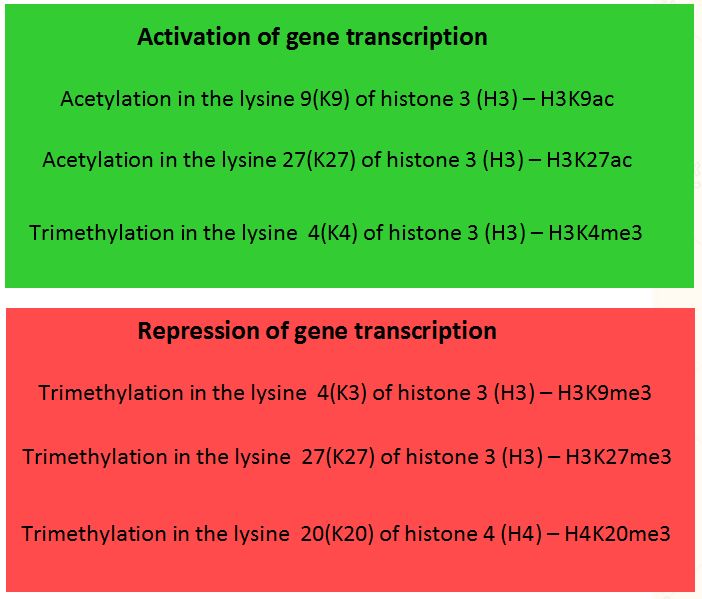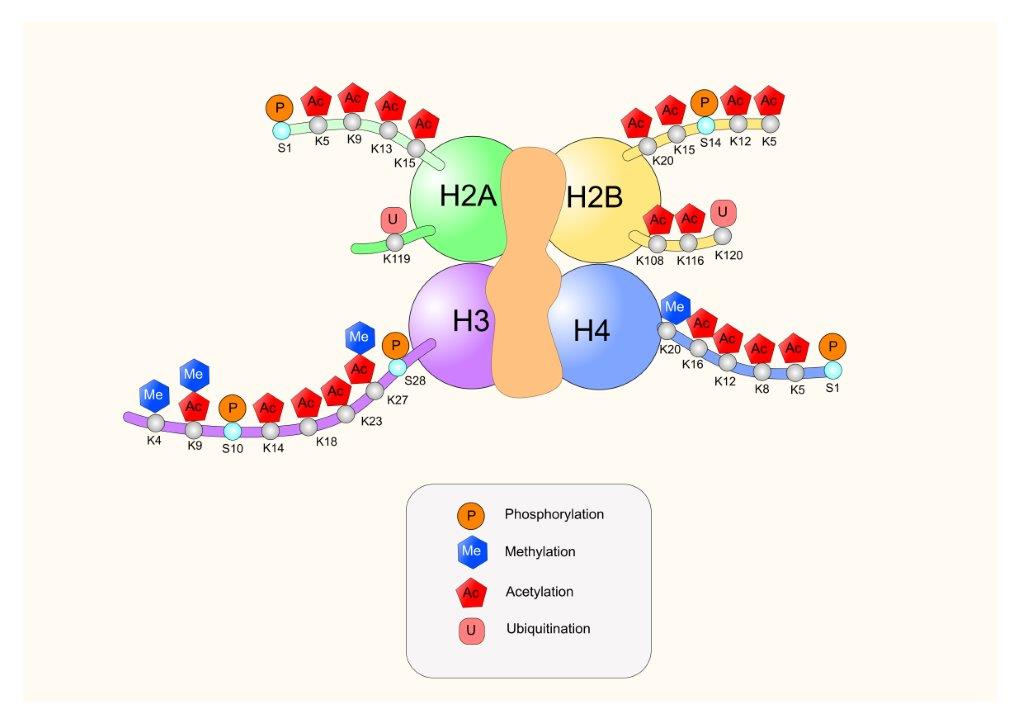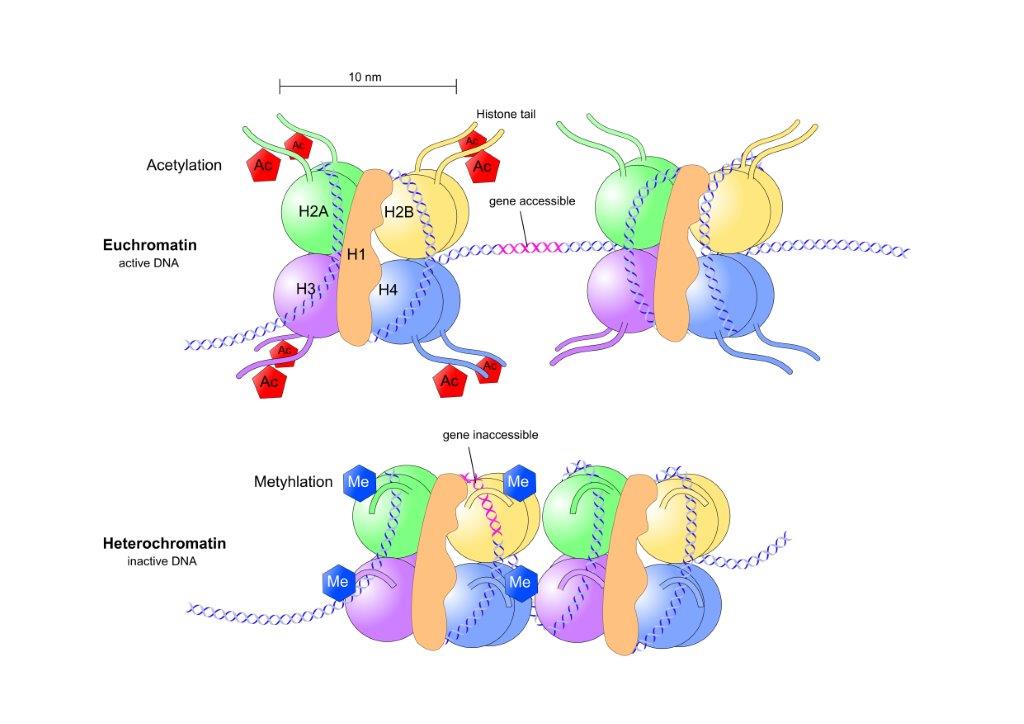Subtopic 4.3: Histones Post-Translational Modifications
The nucleosome is composed of five histone proteins (H1, H2A, B, H3, and H4). The N-terminus of these histone proteins are subject to covalent modifications such as methylation, phosphorylation, acetylation, ubiquitination or sumoylation by a group of histone-modifying enzymes . Alterations in these proteins contribute to the accessibility and compactness of the chromatin, and result in activation or suppression of particular genes.
|
DNA methylation and histone post-translational modifications play important role in the establishment of chromatin structure and in consequence in the gene expression modulation. These epigenetic mechanisms can be independent or can happen together to control the gene expression. They also may influence each other, for example the histone methylation can help to direct DNA methylation patterns, and DNA methylation might serve as a template for some histone modifications after DNA replication.
|







